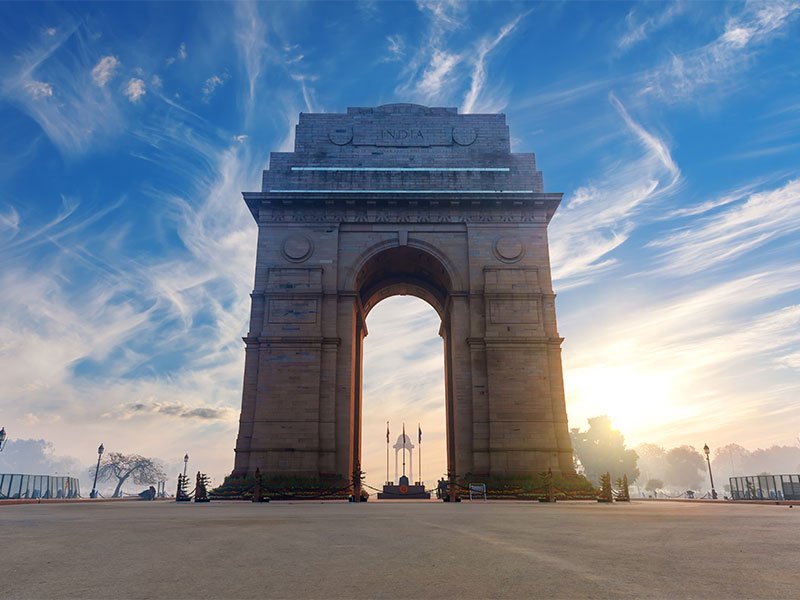Embark on a journey that seamlessly blends the majestic heritage of northern India with the tranquil landscapes of the south. Our 10-Day Golden Triangle & Kerala Backwaters Fusion Itinerary takes you through the heart of India’s iconic Golden Triangle—Delhi, Agra, and Jaipur—before whisking you away to the serene backwaters of Kerala. Imagine starting your mornings exploring centuries-old forts and bustling bazaars, then ending your nights drifting gently on a coconut-fringed canal aboard a traditional houseboat. If you’ve ever wondered how to experience both the historical grandeur and the laid-back charm in a single trip, this is your chance to discover the best of both worlds.
In this interactive guide, you’ll find a carefully crafted day-by-day plan, insider tips, and suggestions to make the most of your time. We’ve balanced sightseeing with leisure, ensuring you have enough moments to soak in local flavors, interact with friendly locals, and capture unforgettable memories. Whether you’re a first-time visitor or a seasoned traveler returning to India, this itinerary is designed for maximum enjoyment, minimal stress, and plenty of “wow” moments. So, are you ready to dive into the details of this 10-Day Golden Triangle & Kerala Backwaters Fusion Itinerary?
Day 1: Arrival in Delhi – India’s Capital Beckons
Morning: Arrival and Hotel Check-In
- Touch down at Indira Gandhi International Airport (DEL), where a warm welcome from your travel agency representative awaits.
- Transfer to your pre-booked hotel in Delhi (choose from Connaught Place, Aerocity, or South Delhi for easy access to major attractions).
- After check-in, freshen up and prepare for your first taste of Delhi’s rich tapestry.
Afternoon: Exploring Old Delhi
- Lunch Suggestion: Enjoy a traditional North Indian meal at a local dhaba or restaurant. Try butter chicken at a renowned eatery like Karim’s or Moti Mahal near Jama Masjid.
- Jama Masjid: Begin your Old Delhi exploration at one of India’s largest mosques. Admire its grand courtyard, three marble domes, and two imposing minarets.
- Rickshaw Ride in Chandni Chowk: Hop onto a cycle rickshaw and navigate the narrow lanes of Chandni Chowk. Experience the sensory overload of spice bazaars, sweet shops, and bustling markets.
- Red Fort (Lal Qila): Visit the UNESCO World Heritage site built by Emperor Shah Jahan. Walk through its impressive Lahori Gate, Diwan-i-Aam (Hall of Public Audience), and the ornate Diwan-i-Khas (Hall of Private Audience).
Interactive Tip: While bargaining in Chandni Chowk, practice your math skills in rupees—ask vendors to give you one rupee off, then watch them add it back to the price! It’s all part of the fun.
Evening: Contemporary Flavors
Head to Connaught Place or Hauz Khas Village for dinner. Both areas offer a mix of modern cafes, rooftop bars, and authentic street food. Sample chaat (Indian street food), kebabs, or fusion dishes at places like Saravana Bhavan (vegetarian South Indian) or Social (contemporary café concept).
Optional: Attend the sound-and-light show at Red Fort (if open), which narrates Delhi’s history against a dramatic backdrop.
Day 2: Delhi Sightseeing – The City’s Diverse Charms

Morning: Historic Landmarks and Monuments
- Qutub Minar Complex: Start early to avoid crowds. Marvel at the 73-meter-tall red sandstone minaret, built in 1193 CE. Explore the surrounding archaeological remains, including the Iron Pillar and ancient mosque ruins.
- Humayun’s Tomb: Proceed to the “precursor” of the Taj Mahal. Witness the stunning Persian-inspired garden tomb built in 1572 CE, a UNESCO World Heritage site.
Afternoon: New Delhi’s Grandeur
- Lunch Suggestion: Dine at Khan Market, where you’ll find a variety of cuisines—from continental to Indian. Try local favorites like kebabs or paneer tikka.
- India Gate & Rajpath: Stroll around the war memorial built in honor of soldiers who died in World War I.
- Rashtrapati Bhavan/Viewpoint: Drive past the official residence of India’s President. Pause briefly for photographs near the imposing structure.
- Parliament House: View the circular building (from outside) where India’s legislative business takes place.
- Gurudwara Bangla Sahib: Visit this famous Sikh temple. Experience the serene atmosphere inside, and if time permits, partake in the langar (community meal).
- Interactive Question: Which would you choose—exploring Mughal architecture at Humayun’s Tomb or experiencing the spiritual serenity at Gurudwara Bangla Sahib? There’s no wrong answer; both are equally enriching!
Evening: Culture and Markets
- Dilli Haat: Head to this open-air market showcasing crafts from all over India. Sample Rajasthani thali, Gujarati snacks, or northeastern delicacies while browsing for souvenirs.
- Optional: Catch a cultural performance (classical dance or folk music) at Kingdom of Dreams in Gurugram (approx. 45 minutes’ drive), if time and interest permit.
Day 3: Delhi – Agra (Approximately 210 km, 4–5 Hours’ Drive)
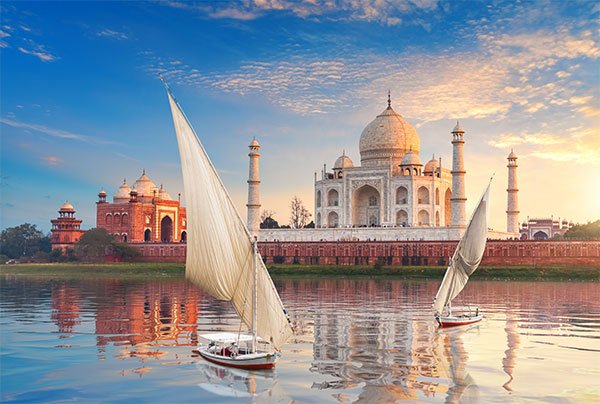
Morning: Depart for Agra
- After breakfast, embark on a scenic drive to Agra via the Yamuna Expressway. Enjoy the lush green countryside views.
- En Route Stop: Optionally, visit Bharatpur Bird Sanctuary (Keoladeo National Park)—a paradise for birdwatchers, especially during winter months (October–March).
Afternoon: Arrival in Agra and Lunch
- Check into your hotel near the Taj Mahal or Agra Fort.
- Enjoy a hearty lunch featuring local specialties—try petha (a sweet made from ash gourd) and Bedai aloo (spiced potatoes) with jalebi.
Late Afternoon: Agra Fort & Itimad-ud-Daulah
- Agra Fort: Explore this UNESCO World Heritage site, built by Emperor Akbar in 1573 CE. Wander through its courtyards, halls, and palaces—Diwan-i-Aam, Diwan-i-Khas, and the Musamman Burj (where Shah Jahan was imprisoned).
- Itimad-ud-Daulah (Baby Taj): Often called the “draft” of the Taj Mahal, this smaller mausoleum built in 1628 CE features exquisite pietra dura work.
Evening: Sunset at Mehtab Bagh
- Head to Mehtab Bagh, the garden complex on the opposite bank of the Yamuna River. From here, get a stunning sunset view of the Taj Mahal framed by the garden’s reflecting pool—an ideal photo opportunity.
- Dinner at a rooftop restaurant overlooking the Taj Mahal, if available.
- Local Insight: If you’re an early bird, consider returning to Mehtab Bagh at dawn for a quieter, golden-lit view of the Taj Mahal, unobstructed by crowds. Ready to turn this dream itinerary into reality? Contact the best travel agency in Delhi to book your Ultimate 10-Day Golden Triangle & Kerala Holiday Package today and unlock exclusive deals on accommodation, guided tours, and seamless transfers!
Also Read: Explore the Best Indian Holiday Packages – Top Destinations
Day 4: Sunrise at the Taj Mahal – Agra to Jaipur (Approximately 240 km, 5–6 Hours’ Drive)
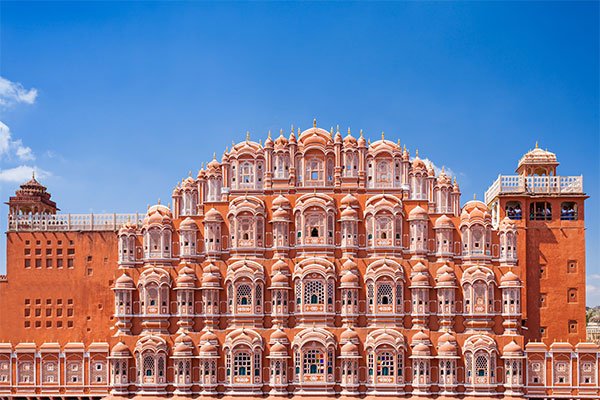
Early Morning: Sunrise at the Taj Mahal
- Wake up before dawn and depart for the Taj Mahal. Witness the monument bathed in soft, golden light as the sun rises—a moment of surreal beauty you’ll cherish forever.
- Enter the monument complex (opens around sunrise) and explore the white-marble tomb, the intricate inlay work, and the lush gardens.
Late Morning: Return to Hotel and Breakfast
- After your visit, return to the hotel for breakfast. Pack your bags and check out by mid-morning.
Midday: Drive to Jaipur via Fatehpur Sikri
- En route to Jaipur, stop at Fatehpur Sikri—a UNESCO World Heritage site and abandoned Mughal city built by Akbar in 1571 CE. Highlights include the Buland Darwaza (Gate of Magnificence), Jama Masjid, and the spectacular Panch Mahal.
- Lunch: Enjoy a simple North Indian meal at a local restaurant in Fatehpur Sikri town.
Afternoon: Continue to Jaipur
- Resume your journey toward Jaipur, known as the “Pink City” of Rajasthan.
- Check in at your hotel in Jaipur—choose from areas like C-Scheme, Bani Park, or near the Airport Road for easy access.
Evening: Leisure in Jaipur
- Relax at the hotel or take a stroll around the local market area—Johari Bazaar and Bapu Bazaar are perfect for picking up Rajasthani textiles, jewelry, and handicrafts.
- Dinner at a traditional Rajasthani restaurant—sample dal-baati-churma, gatte ki sabzi, and ker sangri.
- Insider Tip: If you have energy left, visit the Chokhi Dhani Village (approx. 20 km from Jaipur) for a cultural evening—Rajasthani folk dances, puppet shows, camel rides, and traditional cuisine served on thalis.
Day 5: Jaipur—Palaces, Forts & Local Flavors
Morning: Amber Fort & Jaigarh Fort
- Amber Fort (Amer Fort): Depart early for this hilltop fort-palace built by Raja Man Singh in 1592 CE. Don’t miss the Sheesh Mahal (Hall of Mirrors), Diwan-i-Aam, and the sprawling fortifications. Consider riding an elephant (subject to availability) or taking a jeep up the hill.
- Jaigarh Fort (optional): Located just above Amber Fort, Jaigarh Fort houses the world’s largest cannon on wheels, “Jaivana.” The fort also offers panoramic views of the Aravalli Hills.
Afternoon: City Palace & Jantar Mantar
- Return to the city and visit City Palace, a royal complex consisting of courtyards, gardens, and museums showcasing textiles, armory, and decorative arts.
- Walk a short distance to Jantar Mantar, an astronomical observatory built by Maharaja Sawai Jai Singh II in 1728 CE. Observe the giant instruments used for measuring time, tracking stars, and predicting eclipses.
Late Afternoon: Hawa Mahal & Local Market
- Hawa Mahal: View the “Palace of Winds” from outside. This five-story, honeycomb-style monument with 953 small windows (jharokhas) was designed to allow royal ladies to observe street life without being seen.
- Shopping: Explore Johari Bazaar for colorful Rajasthani jewelry, Bapu Bazaar for textiles and mojari (traditional footwear), and Tripolia Bazaar for brassware and handicrafts.

Evening: Rajasthani Cultural Performance
- Dinner at 1135 AD (inside Amber Fort) or Suvarna Mahal (Rambagh Palace) for a royal dining experience.
- Attend a traditional Rajasthani folk dance and music show—many hotels and cultural centers (e.g., Bapu Bazaar Cultural Center) organize performances highlighting Kalbeliya dance, Ghoomar, and folk music.
- Interactive Suggestion: Try your hand at a short turban-tying session—many artisans near Hawa Mahal offer quick lessons. You’ll laugh, learn, and maybe even discover a new style!
Day 6: Jaipur to Kochi—Journey to the Land of Backwaters
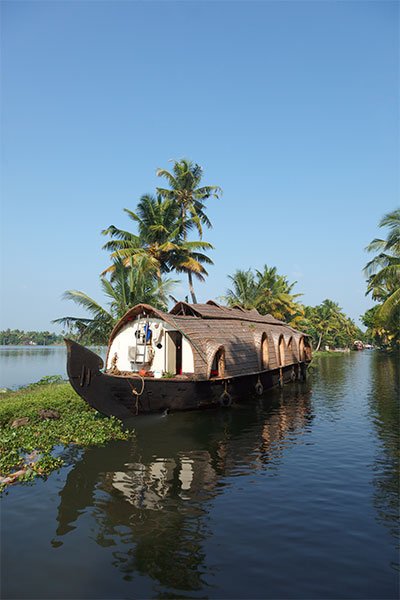
Morning: Flight to Kochi
- Check out after an early breakfast and head to Jaipur International Airport (JAI). Board a morning flight to Kochi (Cochin International Airport, COK). Typical flight time is around 3–3.5 hours.
- Upon arrival in Kochi, you’ll be transferred to your hotel in Fort Kochi or Ernakulam—both ideal bases for exploring the city’s colonial heritage.
Afternoon: Explore Fort Kochi
- Lunch: Savor traditional Kerala fish curry and rice or try appam with stew (rice pancakes with vegetable or meat stew) at a local café.
- St. Francis Church: Visit the oldest European church in India (1503 CE), where Vasco da Gama was originally buried.
- Chinese Fishing Nets (Cheena Vala): Head to the waterfront to watch these iconic cantilevered fishing nets in action—a living legacy of 14th-century trade relations with China.
- Mattancherry Palace (Dutch Palace): Admire the stunning murals depicting scenes from the Ramayana and Mahabharata.
- Jewish Synagogue (Paradesi Synagogue): Located in Jew Town, this 17th-century synagogue houses antique chandeliers, gold crowns, and an old Bible. Wander through the aromatic spice shops of Jew Town.
Evening: Sunset & Dinner
- Sunset at Fort Kochi Beach: Relax and watch the sun dip below the horizon.
- Dinner at a waterfront restaurant—enjoy Malabar biryani or grilled seafood specialties.
- Local Insight: Fort Kochi’s streets are lined with colonial-era bungalows, cozy cafés, and art galleries. Take a stroll to discover hidden murals, quirky shops, and charming graffiti. Don’t miss out on our specially curated Kerala holiday packages, choose from houseboat stays, luxury resorts, and personalized experiences to make your southern sojourn truly unforgettable.
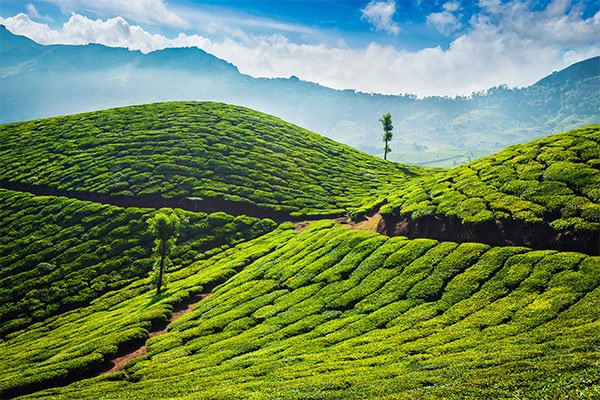
Day 7: Kochi to Alleppey—Board Your Backwater Houseboat
Morning: Transfer to Alleppey
- After breakfast, depart for Alleppey (Alappuzha), often called the “Venice of the East”—a 1.5 to 2-hour drive through lush paddy fields and coconut groves.
- Board your traditional Kettuvallam (houseboat) between 10:00 AM and noon. These houseboats have thatched roofs and wooden hulls, with cozy bedrooms, a living area, and an open deck.
Afternoon: Cruising the Backwaters
- Lunch on Board: Indulge in freshly prepared Kerala cuisine—rice, fish curry (or vegetarian stew), tapioca, and local salads.
- As the houseboat glides through narrow canals, observe rural life: farmers tending rice fields, women washing clothes by the riverbank, and water buffalo grazing.
- Spice Plantations: The boat navigates past lush spice gardens growing cardamom, pepper, cinnamon, and clove. Ask the crew to anchor briefly so you can step ashore for a guided walk.
- Interactive Prompt: Did you know Kerala’s backwaters cover over 900 km of interconnected canals, rivers, lakes, and inlets? Feel free to chat with the boat crew—many are locals who know fascinating stories about each village you pass.
Evening: Village Experience & Dinner
- Some houseboats offer a chance to visit a nearby village for a coconut-climbing demonstration and toddy tasting (fermented coconut palm sap).
- Dinner on Board: Enjoy a candlelit meal on deck under the star-lit sky. Sample Kerala specialties such as karimeen pollichathu (pearl spot fish wrapped in banana leaf) and kappa puzhukku (mashed tapioca).
- Night Stay: Overnight on the houseboat, gently rocked to sleep by the lapping waters.
Day 8: Alleppey to Kumarakom – Birdwatching & Lakeside Leisure
Morning: Disembark and Transfer
- Awake to the gentle sounds of birds and rippling water. Enjoy a hearty breakfast on board as your houseboat docks early.
- Disembark around 9:00 AM and transfer to Kumarakom (approx. 1–1.5 hours by road), known for its bird sanctuary on the banks of Vembanad Lake.
Late Morning & Afternoon: Kumarakom Bird Sanctuary
- Check into a lakeside resort or heritage bungalow. After refreshing, head to Kumarakom Bird Sanctuary—a haven for migratory birds, including Siberian storks, egrets, herons, and kingfishers (best visited between November and February).
- Boat Ride: Take a guided boat tour through the sanctuary’s narrow channels. Keep your eyes peeled for the majestic greater flamingo, painted stork, and local waterfowl.
- Lunch: Relish a Kerala specialties buffet at your resort’s restaurant—try avial, thoran, and fish moilee.
Late Afternoon: Lakeside Relaxation
- Rent a canoe or paddleboat to explore the quieter backwaters around Vembanad Lake at your own pace.
- Alternatively, unwind with an Ayurvedic massage at a local wellness center—many spa facilities in Kumarakom specialize in traditional Kerala massages.
Evening: Sunset Over the Lake
- Head to the lakeshore and witness the magical sunset, as the water reflects hues of orange and pink.
- Dinner: Dinner at your resort featuring live Kerala classical music (Carnatic) or a cultural program showcasing Kathakali dance (advance booking recommended).
- Traveler’s Note: If you’re passionate about photography, carry a telephoto lens for capturing birds and the play of light on Vembanad Lake. Early mornings and late afternoons provide the best natural lighting.
Day 9: Day Trip to Munnar – Tea Gardens & Hill Station Charm
Early Morning: Depart for Munnar
- After an early breakfast, embark on a scenic drive to Munnar (approx. 4–5 hours), India’s premier hill station nestled at 1,600 meters above sea level. The winding roads reveal cascading waterfalls, mist-covered valleys, and endless tea plantations.
Mid-Morning: Tea Estate Visit
- Arrive in Munnar around 10:30 AM. Head straight to a tea estate (e.g., Tata Tea Museum or Kannan Devan Tea Museum) for a guided tour of the tea processing unit. Learn how plucked green leaves transform into the tea you sip every morning.
- Sample freshly brewed Munnar tea—notice its distinctive aroma and flavor.
- Lunch at a hillside restaurant overlooking the plantations. Try Malabari chicken curry, local fish specialties, or a simple Kerala vegetarian thali.
Afternoon: Eravikulam National Park & Mattupetty Dam
- Eravikulam National Park (subject to seasonal opening; closed Feb–Mar): Home to the endangered Nilgiri Tahr (mountain goat). A short trek leads to the Anamudi Peak, South India’s highest point. During February–March, you can witness the spectacular Neelakurinji blooms, turning the hills blue.
- Mattupetty Dam: Nearby, enjoy a speedboat ride in the reservoir, with panoramic views of lush hills.
- Echo Point: Stop briefly at this spot where the valley echoes your voice—perfect for fun group photos.
Late Afternoon: Return to Kumarakom
- Begin the drive back to Kumarakom, descending from the hills as dusk approaches.
- Evening Leisure: Arrive at your resort by early evening. Unwind with a local toddy (fermented palm sap) or coconut water at a lakeside café.
- Dinner: Traditional Kerala meal at the resort or venture to a nearby village restaurant for authentic flavors.
- Interactive Insight: Notice how Munnar’s climate (temperate throughout the year) contrasts sharply with the humid, coastal weather of Alleppey. Keep a light jacket handy, especially if you visit viewpoints early in the morning or late at night.
Day 10: Back to Kochi – Departure & Farewell
Morning: Drive to Kochi
- Enjoy a leisurely breakfast overlooking Vembanad Lake. Check out by mid-morning and drive back to Kochi (approx. 2 hours).
- If time permits, you can request a brief stop at Cherai Beach (north of Kochi) for a quick dip or a stroll along the sandy shore.
Late Morning: Last-Minute Shopping & Cultural Wrap-Up
- Upon arrival in Kochi city, head to Lulu Mall (if you prefer air-conditioned shopping) or explore local handicraft emporiums for souvenirs—handcrafted coir products, Kathakali masks, and traditional Kerala sarees.
- Lunch: Savor your final Kerala meal—a dosa with chutney, appam, or a seafood platter at a waterfront restaurant.
Afternoon: Departure
- Transfer to Cochin International Airport (COK) for your onward flight.
- As you board, reflect on the kaleidoscope of experiences—sprawling Mughal monuments, bustling bazaars, colorful palaces, then the serene backwaters, emerald tea gardens, and palm-fringed canals.
Travel Tips & Essential Information
- Best Time to Visit
- Golden Triangle (Delhi–Agra–Jaipur): October to March offers cooler, pleasant weather. Summers (April–June) can be extremely hot (up to 45°C/113°F). Monsoons (July–September) bring humidity and occasional rains.
- Kerala Backwaters: September to March is ideal—pleasant weather, less rainfall, and comfortable temperatures. April–June can get hot; monsoon season (July–August) is lush but rainy (houseboat cruises still operate, but schedule may be affected).
2. Visa & Entry Requirements
- Most travelers require an Indian e-Visa, which can be obtained online 4 to 120 days prior to arrival. Ensure your passport has at least six months’ validity beyond your travel dates.
- Carry multiple photocopies of passport and visa; stores may ask to keep a copy during hotel check-ins.
3. Transportation Logistics
- Domestic Flights: Ideal for connecting from Jaipur to Kochi; book well in advance to secure lower fares. Airlines such as IndiGo, Air India, and SpiceJet operate daily flights.
- Private Car & Driver: Hiring a private vehicle for the Golden Triangle portion (Delhi–Agra–Jaipur) is convenient—allowing you to stop en route, adjust departure times, and travel at your own pace.
- Local Transport in Kerala: For short distances (e.g., Kochi city tours), auto-rickshaws and taxis are readily available. For houseboat boarding, your agency arranges pickup from Alleppey.
- Railway Option: If you prefer trains, consider the Shatabdi Express (Delhi–Agra) or Jaipur–Danapur Express etc., but factor in schedule and comfort—flights remain faster for longer legs.
4. Packing Essentials
- Clothing: Light cotton for daytime in the Golden Triangle (cultural respect: shoulders and knees covered when visiting religious sites). A light shawl or scarf can be handy. For Kerala, breathable clothes and swimwear for boat trips; a light sweater for Munnar (cooler temperatures).
- Footwear: Comfortable walking shoes or sandals for sightseeing; flip-flops/slippers for houseboat. If you plan village visits, carry a pair of sturdy shoes.
- Sun Protection: Sunglasses, wide-brimmed hat, and high-SPF sunscreen are must-haves, especially in northern plains.
- Electronics: Universal travel adapter, portable charger, and extra SD cards for photography. If you plan to film the backwaters by drone (if allowed), check local regulations first.
- Medical Kit: Basic first-aid supplies, insect repellent (especially in backwater areas), motion sickness tablets (houseboat could sway), and any prescription medications.
5. Health & Safety
- Water: Drink only bottled or filtered water. Avoid ice cubes unless you’re certain they’re from purified water.
- Food: Street food can be safe if chosen carefully—look for busy stalls with high turnover. But if you have a sensitive stomach, stick to reputable restaurants. In Kerala, seafood is fresh, but if you have shellfish allergies, clarify with your cook/restaurant.
- Health Precautions: Carry oral rehydration salts (ORS) and antacids for minor stomach issues.
- Cultural Respect: Always remove your shoes before entering temples, mosques, or certain palaces. Dress modestly when visiting religious sites.
- Safety: India is generally safe for tourists, but stay vigilant in crowded areas, safeguard your belongings, and avoid isolated areas after dark. Always use registered taxis/rideshare services.
6. Connectivity & Currency
- SIM Cards: Airtel and Jio offer tourist SIM cards at the airport—verify requirements for passport and visa photocopy. Plans include data and talk time.
- Currency Exchange: Exchange a small amount at the airport for immediate expenses; better rates are often available at banks or authorized money changers in city centers.
- Wi-Fi: Most hotels, cafés, and restaurants in major cities offer free Wi-Fi. On the houseboat, connectivity may be patchy; cherish it as a “digital detox” moment!
7. Language & Local Etiquette
- Language: Hindi (in the Golden Triangle) and Malayalam (in Kerala) are the primary local languages, but most tourism-related staff speak English. Learning a few phrases—“Namaste” (Hello), “Dhanyavaad” (Thank you), “Shukriya” (Thanks in Hindi)—goes a long way in connecting with locals. In Kerala, “Vanakkam” (Hello), “Nanni” (Thank you in Malayalam).
- Respect: Avoid public displays of affection; always ask permission before photographing people, especially in rural areas.
- Tipping: In restaurants, 5–10% of the bill is appreciated if service charge is not included. For drivers and guides, tipping ₹200–₹300 per day is customary. Houseboat crew often expect a tip of ₹500–₹1,000, depending on service.
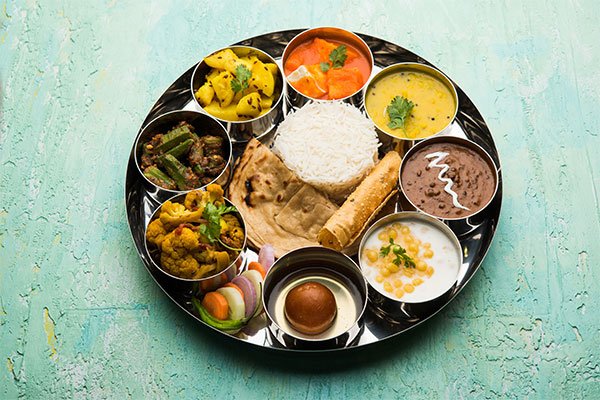
Frequently Asked Questions (FAQs)
Q1: Is 10 days enough to experience both the Golden Triangle and Kerala backwaters?
A: Absolutely! This itinerary balances time efficiently—4–5 days for the Golden Triangle and 4–5 days for Kerala’s backwaters and hill station. While you’ll experience a fast-paced introduction to North India’s heritage, you’ll also savor Kerala’s leisurely pace. If you prefer deeper exploration (e.g., adding Munnar for an extra day or exploring Udaipur in Rajasthan), consider extending your trip to 12–14 days.
Q2: Can I substitute Munnar with another hill station?
A: Certainly. If you’d like to explore Wayanad (famous for wildlife sanctuaries and waterfalls) or Thekkady (Periyar Wildlife Sanctuary), you can customize Day 9 accordingly. Just account for similar travel time (3–5 hours from Kumarakom).
Q3: What should I pack for the houseboat experience?
A: Light, comfortable clothing; a hat and sunglasses for daytime; insect repellent; swimwear (if your houseboat has a sun deck or if you plan to swim near village banks); and a light shawl or cardigan for cooler mornings and evenings. Most houseboats provide linen, but check with your agency regarding towels and toiletries.
Q4: How do I book the houseboat—through my travel agency or direct?
A: We recommend booking through your travel agency for peace of mind. Agencies often have agreements with reliable houseboat operators, ensuring better service, punctuality, and adherence to safety standards. If you book directly, verify licenses, safety equipment, crew credentials, and menu options in advance.
Q5: Is it safe to travel to India during monsoon season?
A: Monsoon (July–September) in Kerala transforms the region into a lush paradise. Houseboats still operate, though occasional heavy rains can affect itineraries. The Golden Triangle experiences sporadic showers, but sightseeing is generally unaffected. If you don’t mind occasional rainfall and prefer fewer crowds and lower rates, monsoon can be a rewarding choice. Always check weather forecasts and remain flexible.
Local Cuisine Must-Try
- Delhi: Butter Chicken at Moti Mahal; Chaat at Chandni Chowk; Parathas at Paranthe Wali Gali.
- Agra: Bedai with Jalebi; Petha (try flavored pethas like rose or kesar); Dum Pukht biryani.
- Jaipur: Dal Baati Churma; Ghevar (Rajasthani sweet) especially during festivals; Laal Maas (spicy mutton curry).
- Kerala: Appam with vegetable stew; Malabar biryani (especially in Kozhikode-style); Karimeen Pollichathu; Banana chips and pazham pori (banana fritters) as snacks.
Cultural Etiquette & Dos and Don’ts
- Dos: Remove shoes before entering temples, mosques, or certain palaces; greet with “Namaste” (Delhi/Agra/Jaipur) or “Vanakkam” (Kerala); always ask permission before photographing individuals; bargain respectfully in local markets (start 30–40% lower than the asking price).
- Don’ts: Don’t touch someone’s head (considered disrespectful); don’t show affection publicly; avoid pointing your feet at religious icons or older people; don’t accept food or water from strangers if you have a sensitive stomach.
Conclusion
From the historic grandeur of India’s Golden Triangle to the serene, meandering canals of Kerala, this 10-Day Golden Triangle & Kerala Backwaters Fusion Itinerary offers an unforgettable tapestry of experiences. You’ve wandered through ancient forts, marveled at architectural wonders, savored mouth-watering regional cuisines, and drifted through lush backwaters on a traditional houseboat. Each day is designed to balance exploration with relaxation, ensuring you return home with a heart full of memories and a camera roll brimming with stunning photographs.
Whether you’re an architecture enthusiast, a foodie, or simply seeking a transformative cultural journey, this itinerary promises something for everyone. As you plan your dates, remember that India’s diverse climates and regional festivities can enhance or alter certain experiences—feel free to tweak the schedule based on your travel window. Above all, embrace the unexpected moments: the friendly chatter with a tea seller in Munnar, the laughter echoing across a village canal, the aroma of spices in a Kochi spice shop, and the timeless beauty of the Taj at dawn.
SEND ENQUIRY FOR TRAVEL PACKAGES!
Enter your details, and our consultants will help you with the best quotes
